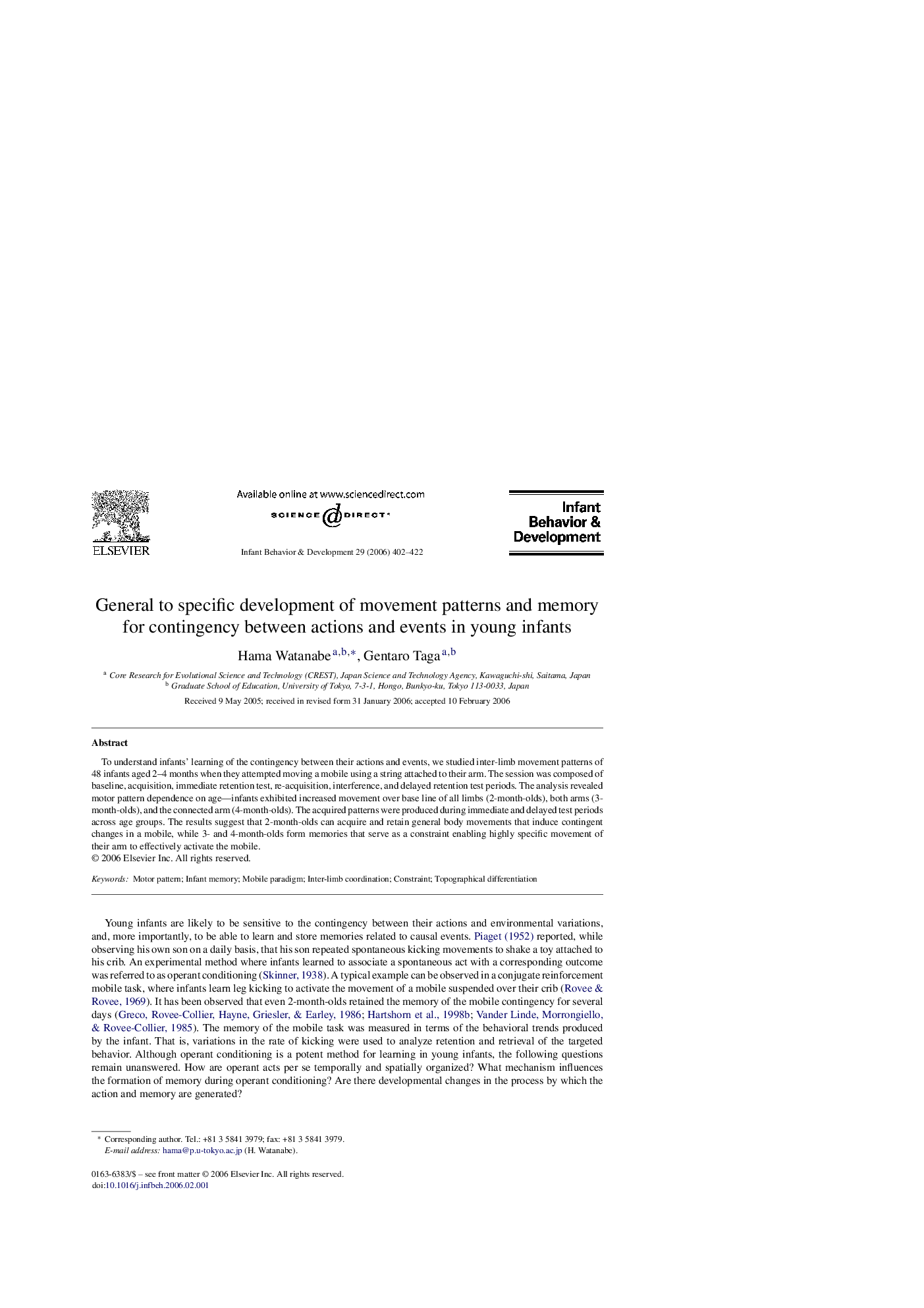| Article ID | Journal | Published Year | Pages | File Type |
|---|---|---|---|---|
| 917688 | Infant Behavior and Development | 2006 | 21 Pages |
To understand infants’ learning of the contingency between their actions and events, we studied inter-limb movement patterns of 48 infants aged 2–4 months when they attempted moving a mobile using a string attached to their arm. The session was composed of baseline, acquisition, immediate retention test, re-acquisition, interference, and delayed retention test periods. The analysis revealed motor pattern dependence on age—infants exhibited increased movement over base line of all limbs (2-month-olds), both arms (3-month-olds), and the connected arm (4-month-olds). The acquired patterns were produced during immediate and delayed test periods across age groups. The results suggest that 2-month-olds can acquire and retain general body movements that induce contingent changes in a mobile, while 3- and 4-month-olds form memories that serve as a constraint enabling highly specific movement of their arm to effectively activate the mobile.
